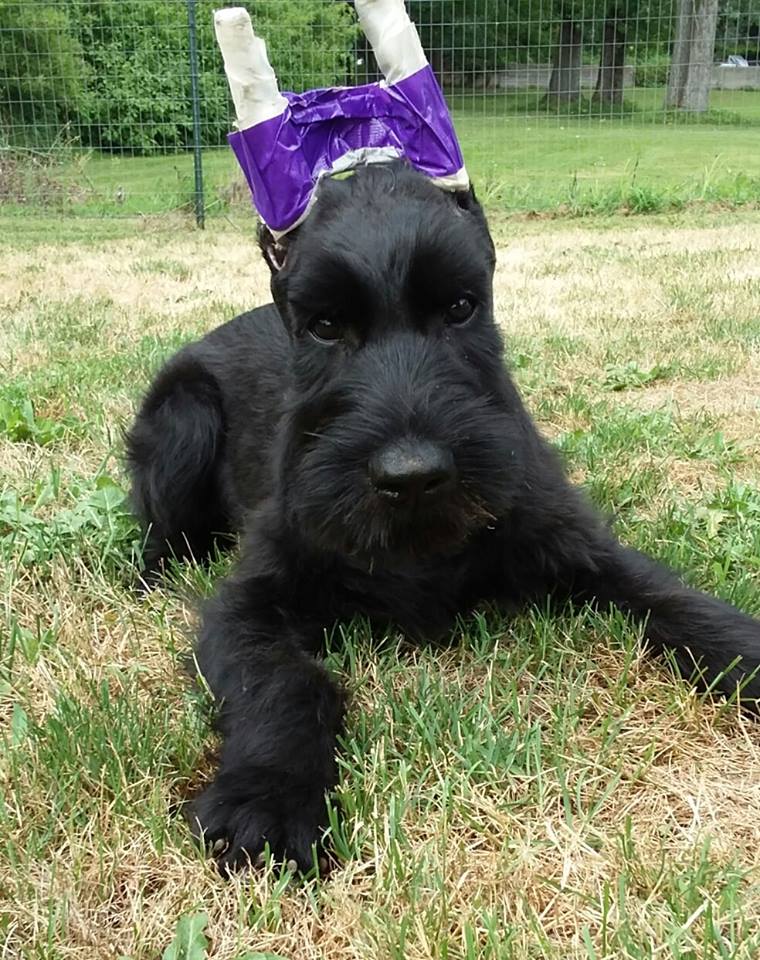
Legacies – where do offspring fall?
One very interesting aspect of performing test breedings on our website is the eventual fun of seeing how actual offspring fall within the predicted ranges. Unlike COI, actual offspring really can differ from one another! I hope the following post is informative and valuable to our breeding communities.
Today I asked in one of our newly released online breeder communities if anyone had yet run the offspring of both a tested sire and dam. A kind Giant Schnauzer breeder responded that she had, and gave me permission to use her breeding in a demonstration. Thank you for your generosity to both the dam and sire owners for your permissions! If you have not already, you can read the Giant Schnauzer breed summary here.
The Parents
On our website the sire is “Kato”, Weylin Kato vom Mutter Haus and the dam is Dam is “Sprite”, Firezone’s Clear Legacy.
What do we see by looking at their profiles?
This is the sire: let’s look at the key points.
The DLA: Kato’s DLA types are some of the most common in the breed.
From the report:
“The three most common DLA class I haplotypes are 1014 (0.252), 1092 (0.233) and 1159 (0.173) and are collectively found in 66% of the dogs. The three most common DLA class II haplotypes are 2006 (0.162), 2037 (0.320), 2050 (0.165) and occur collectively in 65% of dogs.”
This is not necessarily bad, but I might consider looking for a dam that has less common haplotypes to breed to, in order to increase their representation in the breed, if all else is equal in a breeding.
Outlier index: His OI is a little below breed average. As this number drops, a breed is breeding towards a genetic bottleneck, or genes that are represented by the majority of a population. The OI of this breed is at a good level, but it may change as more of the population is sampled.
AGR (Average Genetic Relatedness): I fondly call this the “more breeding mates” measurement. If you select for a lower AGR, you will have more unrelated options for your potential breedings. This tells us how a dog is related to other dogs in our database. The higher it is, the more dogs he is related to. He has an AGR of .05, which is higher than breed average. This means he is related to more dogs in the database than the typical Giant Schnauzer. This may change as more of the population is sampled.
IR: And finally, his IR, the inbreeding estimate. Kato has an above average IR value, though it is not especially high. This number is easy to lower in the next generation by breeding to an unrelated female. A high inbreeding measurement would be above .15, according to Dr. Pedersen.
This is the dam: let’s look at the key points.
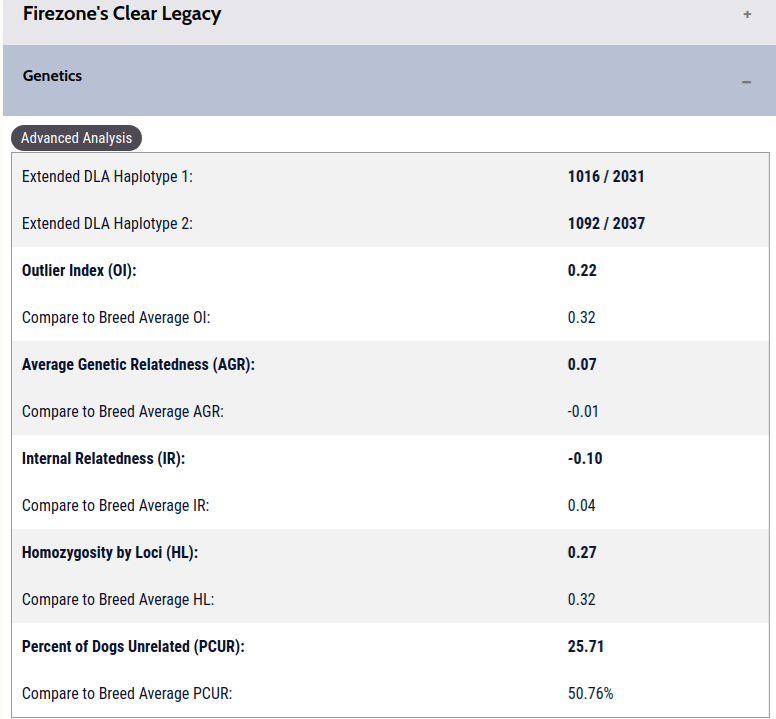
The DLA: One of Sprite’s DLA types is one of the most common in the breed. However, 2031 paired with 1016 is one of the lesser represented DLA types in the Giant Schnauzer breed, having been found in only 3.8% of the tested haplotypes.
From the report “The three most common DLA class I haplotypes are 1014 (0.252), 1092 (0.233) and 1159 (0.173) and are collectively found in 66% of the dogs. The three most common DLA class II haplotypes are 2006 (0.162), 2037 (0.320), 2050 (0.165) and occur collectively in 65% of dogs.”
You may note above that I’d said all things being equal Kato could be bred to a bitch with underrepresented haplotypes; it appears this breeding achieved that goal as 50% of the offspring will carry this type.
Outlier index: Her OI is a little below breed average. As this number drops, a breed is breeding towards a genetic bottleneck, or genes that are represented by the majority of a population. The OI of this breed is at a good level, but it may change as more of the population is sampled. This means she has genetics that are well represented in this population.
AGR: As mentioned, I call this the “more breeding mates” measurement. If you select for a lower AGR, you will have more unrelated options for breedings. This tells us how a dog is related to other dogs in our database. The higher it is, the more dogs she is related to. She has an AGR of .07, which is higher than breed average. This means she is related to more dogs in our database than the typical Giant Schnauzer. This may change as more of the population is sampled.
IR: And finally, her IR. Sprite has a below average IR value, which means she is very outbred and her sire and dam must have been very unrelated to one another.
So, the next question is, how do they look together?
The Litter Prediction
The predicted litter was a category 6 breeding. Categories range from category 10 (unrelated) all the way to 1 (identical twins, we’ve not had one…yet….though it happens very occasionally in litters). We generally recommend Category 6 and above, because when you go to the lower categories the level of inbreeding will be much higher and the genetic distance between the potential sire and dam will be tighter. It’s important to note that this breeding was done prior to the Giant Schnauzer’s data being released. Being that it is a category 6 breeding, it’s vital to ensure that the predicted offspring will not have many fall above the high threshold for inbreeding, which is generally considered to be around .15 IR. Now, there may be instances that you would breed for a higher IR, especially if you are a member of a bottlenecked breed and have a very uncommon dog/bitch. Why? Because those genetics are underrepresented in the population and could be easily lost through genetic drift, so at times a low IR may be sacrificed in order to maintain a line and the genetics (as long as the line is healthy).
What do you see when you look at this predicted breeding?
The Key points
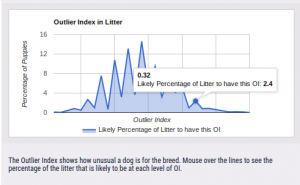 Outlier Index: The predicted range of this litter is .11 to .4, so puppies could fall anywhere from far below breed average to well above it. The lower this number, the closer one might be breeding toward a potential bottleneck within a breed, though the breed average for Giant Schnauzers indicates no current breedwide bottleneck. The variation in predicted values is because each offspring will receive different genetics from the sire and dam, and each sire and dam has common, neutral, and uncommon genetics in relation to the breed. The average for this breeding is .24, which is below breed average. The percentage of puppies falling above breed average is not very high; you can see in the image to the left that 2.4% of the likely litter would
Outlier Index: The predicted range of this litter is .11 to .4, so puppies could fall anywhere from far below breed average to well above it. The lower this number, the closer one might be breeding toward a potential bottleneck within a breed, though the breed average for Giant Schnauzers indicates no current breedwide bottleneck. The variation in predicted values is because each offspring will receive different genetics from the sire and dam, and each sire and dam has common, neutral, and uncommon genetics in relation to the breed. The average for this breeding is .24, which is below breed average. The percentage of puppies falling above breed average is not very high; you can see in the image to the left that 2.4% of the likely litter would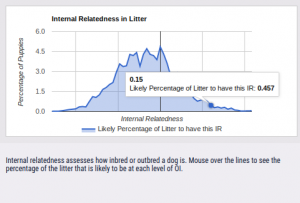 fall at .32, which is the breed average for Giant Schnauzers.
fall at .32, which is the breed average for Giant Schnauzers.
IR: The IR range for this breeding goes from very outbred at -.32 to very inbred at .27. However, when you go to the summary, you can hover over the graph and see just how many will fall in the highly inbred range of .15 to .27. It is a very small percentage of the litter that would possibly fall this high. For example, the likely percentage of the litter that will fall at .15 is .457% (you can see this in the image to the right).
DLA: This breeding would produce 50% of puppies with one atypical for the population DLA type. The other 50% will inherit the most typical for the population DLA. This is not necessarily bad (read about DLA uses here), but when all things are equal, it may be good to keep the puppies with underrepresented DLA types.
The Offspring
This is the tested offspring, “Halzi”, Firezone’s Mayberry Time to Shine. Let’s look at the key points
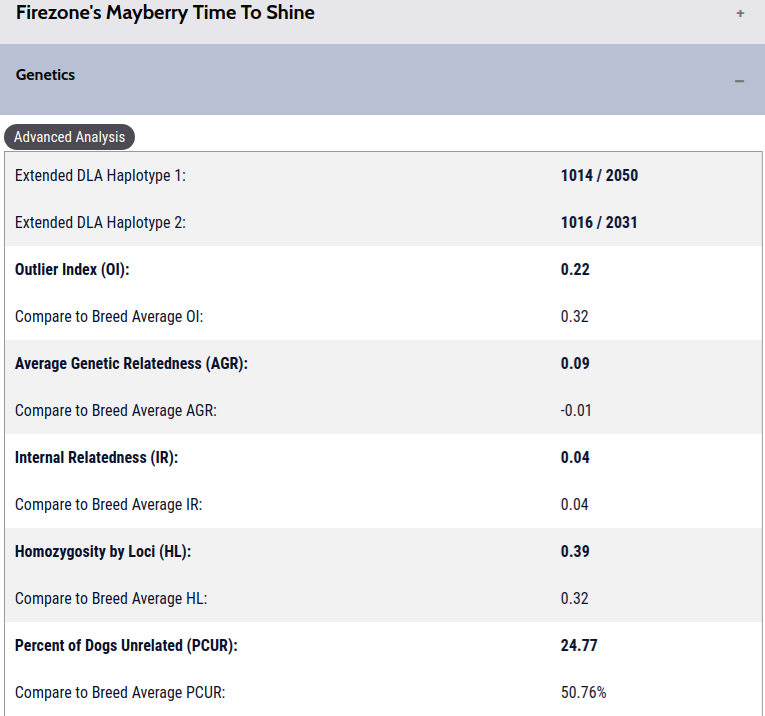 DLA: Halzi was one of the puppies to receive the underrepresented DLA haplotype.
DLA: Halzi was one of the puppies to receive the underrepresented DLA haplotype.
OI: Halzi’s OI fell just below the average for this test breeding, which was within the predicted litter range. It means she has typical for the breed genetics, but does not indicate health or quality. In the next generation I might try to find a suitable mate that meets all the breeder’s desire for type, temperament, drive etc that will help raise the next generation Outlier Index in order to prevent breeding towards a bottleneck.
AGR: This is the “unrelated breeding mate” measurement. The higher this is the less dogs in the database are unrelated to your bitch or dog. Halzi’s is higher than breed average, so she will have less unrelated dogs in the current database than is typical for the breed. However, this may change as more of the breeding population is tested.
IR: Halzi’s IR is right at breed average, and it is not terribly high. It’s higher than the average the breeding prediction may have shown, but well within the range. As long as she is bred to an unrelated sire, she will produce outbred puppies.
Halzi was selected prior to release of results and tested after the fact.
Conclusion
There can be great ranges in genetics for each litter, and puppies can fall anywhere along those predicted ranges. Often we have seen that entire litters vary drastically from one another, both in inbreeding values as well as outlier index and average genetic relatedness (AGR). The choices we make with each breeding will affect our breed genetics and dynamics in future generations to come; we should be careful to select so that we lose less biodiversity to genetic drift.
Of course breeding is more than just about diversity, as we always need to pair selection for type along with selection for diversity. We cannot have one without the other, as breeding is done by passionate breeders because they love their breed, their lines, and their “family” that they have created. BetterBred never suggests breeding for diversity to the exclusion of consideration of pedigree, type, temperament, drive, health etc. This is to add, not detract, from our breeding strategies.
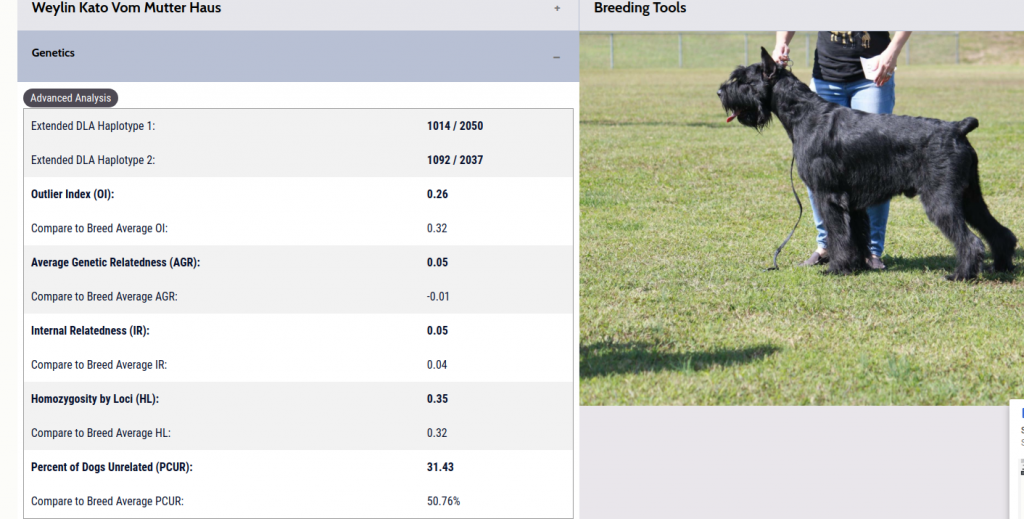
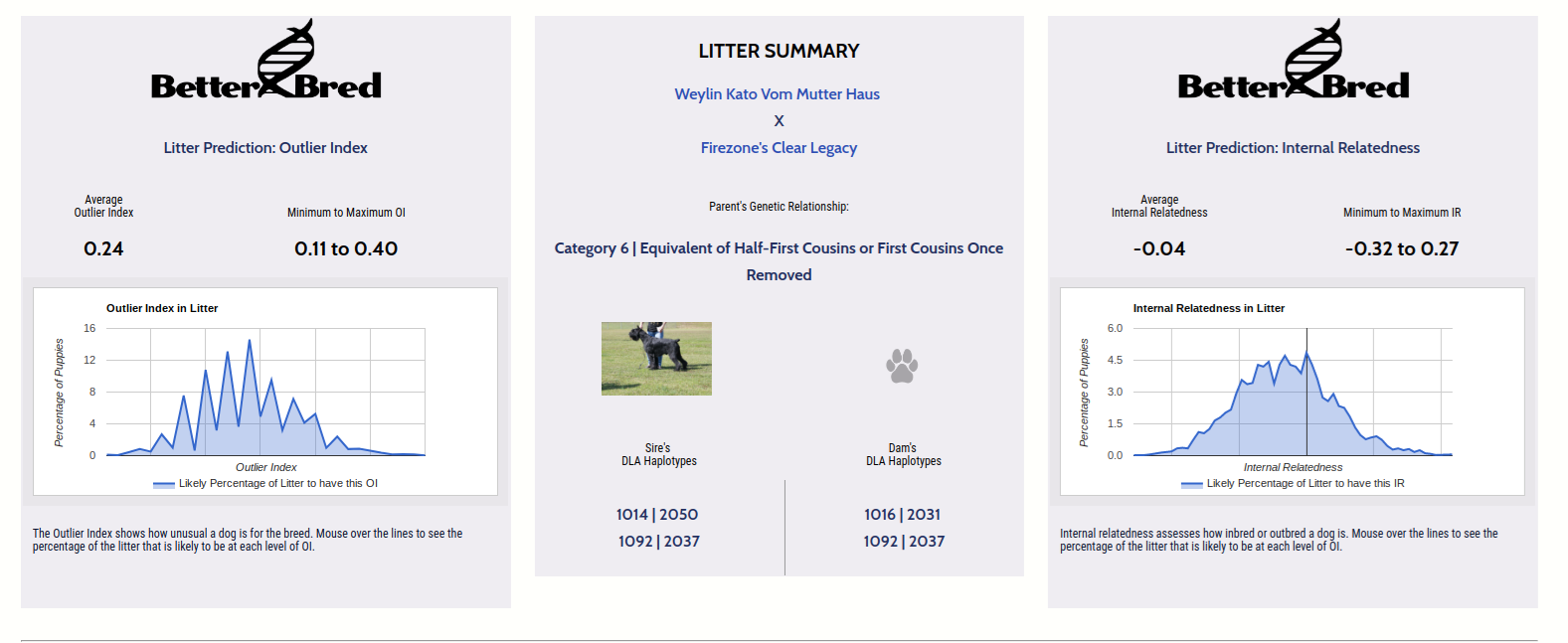
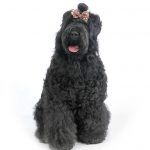 Previous Post
Previous Post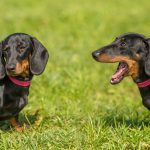 Next Post
Next Post


